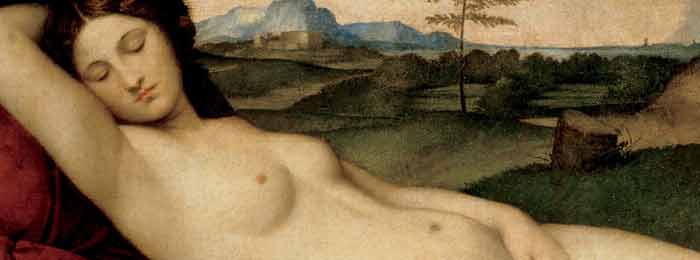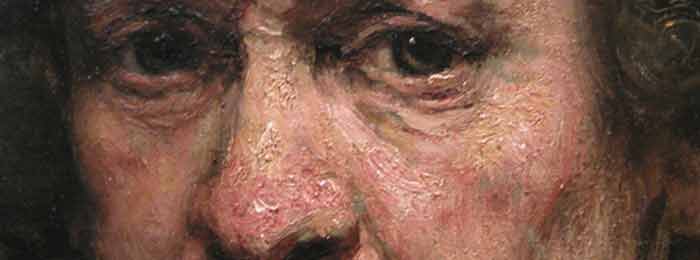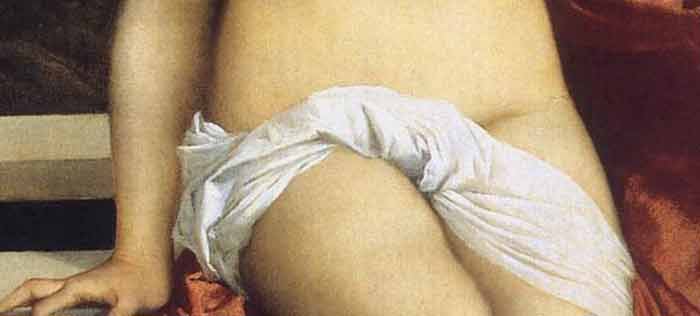On 18 Aug, 2015 With
Venetian Painting Techniques The painting techniques employed by Northern Renaissance artists strongly influenced the work of renowned painters, such as Titian and Giorgione, during the Italian Renaissance. Venetian artists also greatly impacted the styles of this period, notably the Van Eyck brothers. The oil painting techniques developed by these Flemish painters around the year 1400 combined the use of egg tempera and oil painting, with the underpainting being created using a grisaille technique of tempera, while pure colored oil glazes were carefully applied on top. This combination painting technique added remarkable lustre to their small panel paintings, resulting in striking jewel-tones, the most vivid hallmark of the brothers’ famous style. Prior to the Van Eyck brothers’ success with their combination…
Read More
On 8 Jul, 2014 With
The underpainting was a core feature of the Venetian Method, and was often executed in opaque colour, rather than neutral greys. Many colour variations existed on this technique, such as Venetian Red and Flake White, with the only real limitation lying in the fact one ought limit one’s palette to lean paints (paints with a low rate of oil absorption) which are either opaque or very high in tinting strength. High tinting strength paints with a high oil absorption rate (fat paints) may be used only if mixed in minute quantities with very lean paints, so as to keep the underpainting leaner than the layers that will be applied above. Once the colour has dried, it can be modified with…
Read More
On 24 Jun, 2014 With
Titian and Giorgione were foremost among the pioneers of what we now call the Venetian Method of oil painting. The Venetian Method, or Venetian Technique, borrowed heavily from the Flemish Method, which saw the application of transparent glazes for the shadows, greater contrast between dark and light areas, and opaque highlights. The Venetian Method, however, deviates in some key areas, adding its own take on the Flemish process. While the glossy finish of the Flemish Method was ideal for small wood panels, on large paintings it was distracting and decidedly “overkill”; ergo, Titian refined the painting process to produce a less reflective surface. Most probably, he cut out sheen-enhancers like polymerized oils, balsams, and resins, and replaced them with…
Read More
On 7 Mar, 2011 With
Vermeer’s painting technique: Underpainting After the initial outline drawing was completed Vermeer began the underpainting, one of the most important stages in his working procedure. Without a thorough knowledge and mastery of the underpainting technique, many of the artist’s complex compositions, accurate depiction of light and chromatic subtleties could not have been easily achieved. Underpainting, or “dead color” as it was called in Vermeer’s time, is rarely practiced today. For the last century, most artists have simply begun painting directly on the canvas with full color surpassing the underpainting stage entirely. Therefore, neither the function or the practice of underpainting is well understood. In its simplest terms, underpainting is a monochrome version of the final painting which fixes the composition, gives…
Read More
On 10 Feb, 2011 With
Art Terms: Underpainting In art, an underpainting is an initial layer of paint applied to a ground, which serves as a base for subsequent layers of paint. Underpaintings are often monochromatic and help to define colour values for later painting. There are several different types of underpainting, such as verdaccio and grisaille. Underpainting gets its name because it is painting that is intended to be painted over (see overpainting) in a system of working in layers. There is a popular misconception that underpainting should be monochromatic, perhaps in gray-scales. In fact, a multi-color underpainting is much more useful and was used extensively by artists such as Giotto (whose technique is described in detail by Cennino Cennini), as well as by…
Read More




